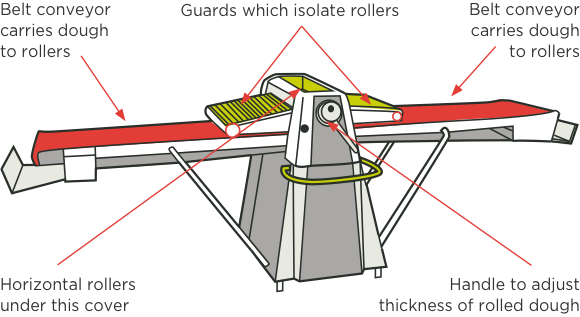Standard Operating Procedure Manual Handling For Bakery
A business or organization can more effectively facilitate training of new employees with the use of well-written standard operations procedures. Beyond training, an SOP manual gives existing team members a resource for less-frequently used procedures, ensuring procedures are done with the correct protocol, maintaining quality control. Writing a standard operating procedures manual requires having a clear understanding of the steps involved in any particular process. Define Core Processes Look at all of the core processes that your company has. Start to define which processes will be outlined and mapped in the SOP maual. While you might not map every last process, it is important to establish the most fundamental and important ones. For example, a restaurant might define core processes as to how a particular signature dish is made.
Just as important is the process for cleaning the restaurant. Create a list of your core processes so you can integrate each one into the SOP manual after mapping it. Map Each Process Each process is defined by the steps needed to complete the process. Missing a step could mean a lost or delayed order or a defective final product. Mapping is drawing out the workflow. For example, say you are creating an SOP for the sales process of an internet inquiry. First, map how the lead is initially contacted after requesting information: phone call, email or text.

Visit our Essential Industries News Link for the latest in Essential News.

Map how many times your sales team conducts follow-ups if the prospect can't be reached initially, with specific scripts for each contact. Map a different script for when the prospect is reached, as well as a set of follow-ups depending on whether the prospect buys your product or service or decides to hold off. Once mapped, write out the process in simple steps. Create Checklists and Forms For any process, it is easier for team members to follow a form or checklist.
Develop a comprehensive template based on the mapped process. If you need to collect specific information at the client intake, make sure the template has all required information laid out succinctly. Don't assume team members remember everything in the SOP, especially when a client is sitting in front of them. Integrate the checklists and forms as an addendum to your process map and steps. Integrate Into an SOP Manual Once you've mapped each process and created all supporting document templates, integrate them into a full SOP manual. Organize the manual based on departments. For example, you might have 'Sales,' 'Operations' and Distribution' sections in the SOP manual.
Retail Standard Operating Procedures Manual
- KITCHEN POLICIES & OPERATING PROCEDURES Standard Operating Procedures for the Major Departments - the Kitchen and. Understand and apply the principles of safe, sanitary food handling. (Key personnel should take the SERVE-SAFE course!) Do not work when you have a cold.
- Transcript of Standard Operating Procedure. End Operations - List of SOP's 1 Bakery ordering 2 Bakery production 3 Butchery receiving 4 Butchery ordering 5 Store start of day 6 Store end of day 7 Supermarket order external suppliers 8 Supermarket order from CDC 9 Take Away Ordering.
Each section would then be broken down further into the core processes of that department, generally in the order each core process takes place in the overall delivery of goods. In the 'Distribution' section, you could have several core processes that include 'Getting the Order,' 'Packaging for Delivery,' 'Shipping' and 'Follow-Up.' Organize the SOP manual with a table of contents, and clearly list each procedure in a bold title header. You might even include tabs for team members to easily flip through the manual, to help them locate pertinent SOPs in their departments.